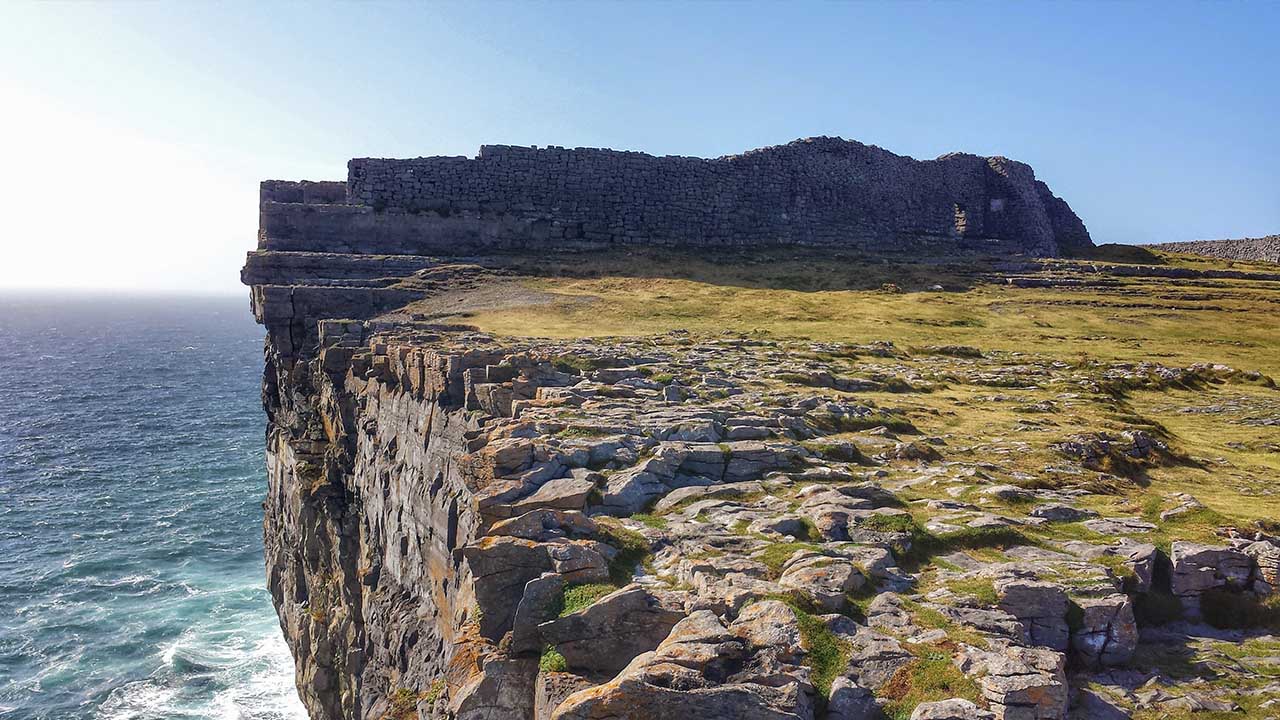View Finder Galway

-
View Finder: Dún Aonghasa
On the surface, this Iron Age fort is nothing more than a pile of old rocks. It is also located on a hard-to-get-to island off the Irish mainland and, what’s more, there’s half of it missing — succumbing to the ferocious weather and swallowed up by the powerful waters that batter the cliffs on which the rest of it remains. None of this, of course, means you shouldn’t rush out and pay it a visit immediately. At 3,000 years old, it actually looks quite good for its age.
Named for Aengus, a Gaelic god of love and inspiration, it’s easy to see why those insightful Celts chose this very spot on which to build their shrine. Perhaps they already knew that travellers from far and wide would come to gaze over the crashing waves and ponder where the winds would take them next. Running in what appears from above to be a series of broken concentric circles, the walls of the fort seem to ripple out of the cliff edge, as if someone had dropped a rather hefty stone in the Atlantic and the whopping physical impact had left its mark on the land.
It’s easy to get swept up in the beauty of this once called "barbaric" site. Restoration around the ramparts has made for a slightly safer visit in recent years, but please be aware that this place is in no way akin to a soft play area. The cliff paths that span towering heights more than 100 metres (330 feet approx.) have no guard rails or clearly marked paths, meaning a misplaced foot or an ever too slightly inquisitive peek over the edge could end up quite … unfortunately.
The wild island of Inishmore might not be the most well-known of Ireland’s off-shore settlements, but therein lies a great deal of its appeal. As one of the outlying "Arans" — the islands famed for their fantastically warm (and much counterfeited) knitwear — you really have to plan the journey here, not only in terms of transport (ferries run from Galway), but also in terms of exertion, as getting to and from Dún Aonghasa itself is a hike and a half. But putting in a little effort will pay off in a big way once you reach this most outstanding of early edifices. As the Atlantic Ocean stretches out for miles and miles in front of you and the ancient stone walls, perhaps you’ll be inspired to say a little "Go raibh maith agat" to good old Aengus himself.